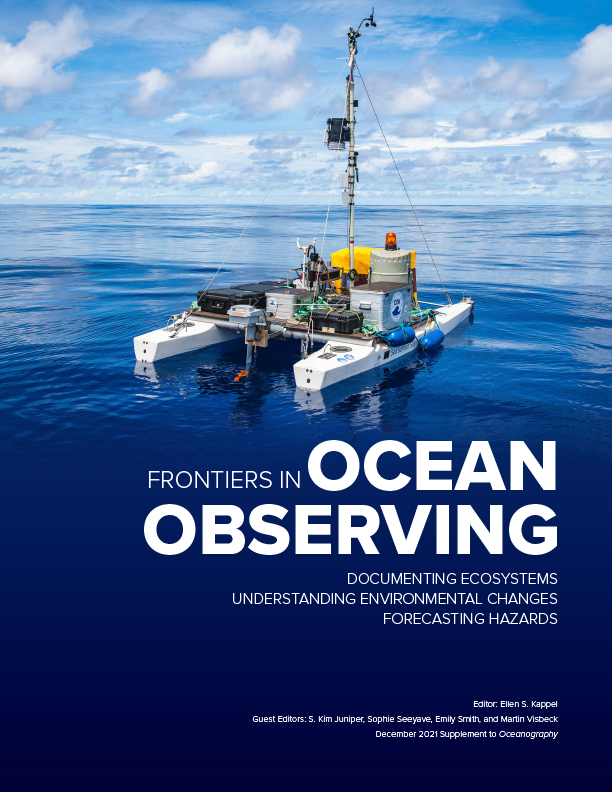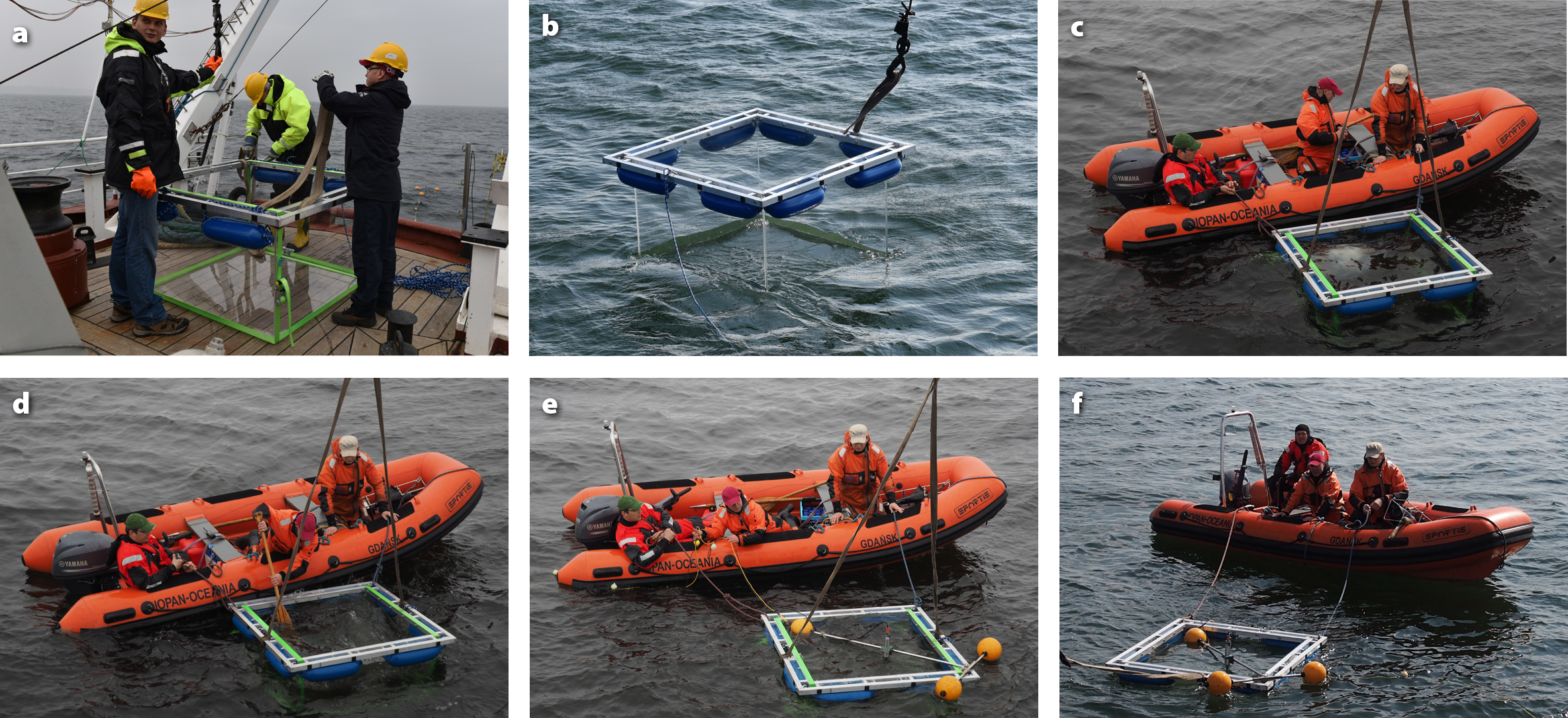Full Text
Oil Droplets as Micropollutants
Dispersed oil droplets are among the most harmful micropollutants in the ocean. They may be crude oil droplets remaining after an oil spill, ship engine oil droplets expelled in wastewater, or land-based oils from industrial and agricultural sources that are carried into the sea. Regardless of the source, oil droplets are a threat to marine life, from tiny plankton to large mammals. They can remain in the surface mixed layer for months to years, and they can be deposited on the ocean floor, affecting the health of benthic organisms. Long-term dispersed oil pollution can also impact human health through the consumption of oil-polluted seafood or as it affects water quality. Along with surface oil spills, it is important to be able to determine the location and concentration of oil droplets in seawater in order to predict their motion and undertake cleanup actions.
Detecting Dispersed Oil Droplets
Remote sensing, based on measuring the backscattering of light from a distance, allows detection and monitoring of oil dispersed on the sea surface. To date, oil slicks have been the main focus of remote detection and monitoring of oil pollution. Hu et al. (2021) summarize the achievements of oil spill detection and discuss the way forward toward the detection of dispersed forms of oil. We explore the question: Can remote ocean color sensors detect tiny oil droplets that remain in seawater for months to years? These tiny droplets are not visible to the human eye in volume concentrations under 15 parts per million (ppm), which typically occur in coastal zones.
Research teams from Gdynia Maritime University and the Institute of Oceanology of the Polish Academy of Sciences jointly conducted a three-stage series of experiments in 2015–2021 to test remote detection of dispersed oil droplets. These experiments included laboratory measurements of physical properties of pure and dispersed oils, mathematical modeling of the influence of dispersed oil droplets on the light backscattered by polluted seawater, and fieldwork in the Baltic Sea. In the laboratory, direct high-precision optical sensors measured temperature-dependent density, viscosity, absorption coefficient, and refractive indexes of pure oils, as well as droplet size distributions in dispersed oils. The results were applied in calculations and modeling of parameters related to light propagation in seawater and ocean color. Some of our modeling results can be found in Haule et al. (2017) and Haule and Freda (2021).
Size Distribution of Oil Droplets Matters
Studies of the interactions between light (visible electromagnetic radiation) and oil droplets present in seawater led us to conclude that the predominant factor that defines these interactions is the droplet size (diameter) distribution. The size structure of oil droplets in the ocean depends on their entrainment in seawater (natural or altered by chemical dispersants), oil type, and environmental conditions such as wave action or turbulence. We found that larger oil droplets of near-millimeter size (bigger than a grain of pollen) decrease the intensity of solar radiation scattered upward in the water column, which is usually related to the amount of incident light and is called the reflectance—an attribute exploited in remote sensing. The presence of larger oil droplets would thus reduce the signal received by remote sensors. Conversely, tiny micrometer-sized droplets (smaller than bacterial cells) increase the intensity of solar radiation scattered upward in the water column. Thus, their presence would increase the signal received by remote sensors. In a real situation, oil droplets in seawater are a mixture of different sizes, and the final light intensity detected by remote sensors will be cumulative.
Measurements in the Baltic Sea
Our Baltic Sea measurements demonstrated the possibility of remote (airborne or satellite) detection of oil droplets in seawater under real field conditions. Optical data were collected in a specially designed floating transparent tank with a volume of about 1 m3. This configuration limited the oil-polluted area and allowed us to keep the oil droplet concentration stable, with minimal disturbance from surrounding waters but maintaining near-natural conditions. Figure 1 shows the experiment concept and an example result. Figure 2 photos display each step of the field experiment.
|
|
|
|
The main field experiment was conducted from the research vessel Oceania in the coastal zone of the southern Baltic Sea. Three types of oil were dispersed in our experiment tank: crude, biodiesel, and mineral in five consecutive concentrations, from 1 ppm to 15 ppm, the concentration range permitted for the effluent and drainage of vessels under the International Convention for the Prevention of Pollution from Ships (MARPOL 73/78 and its subsequent annexes). It is worth emphasizing that all oil types noticeably increased the intensity of solar radiation backscattered in the water column and detected by remote sensors, indicating that the signal from unpolluted seawater differs from the signal of seawater polluted by oil droplets, and that difference carries information on the presence and properties of dispersed oil.
We found that different oil dispersions tended to affect different spectral regions of visible light. Some oils made the seawater appear redder, some greener, and others bluer compared to seawater without any oil droplets. These subtle changes were complex, combined effects of oil type and size distribution. For example, a light crude oil that consisted mostly of fine submicron droplets made seawater appear bluer, and a medium-heavy crude oil that included significantly more larger droplets made seawater appear redder. Biodiesel added more blue and red light to the signal, while some mineral oils made seawater appear redder or greener. Moreover, we found that the modification of the remote signal by dispersed oil droplets can be enhanced or reduced depending on the state of the natural seawater being examined. For example, it is easier to detect dispersed oil in clear open ocean waters than in turbid coastal zones. Seawater rich in phytoplankton or other suspended particles usually produces a lower reflectance signal than clear water, and thus the difference made by the presence of low concentrations of oil droplets may be too small to be detected. Details of the field experiment are discussed in Haule et al. (2021).
ACKNOWLEDGMENTS



